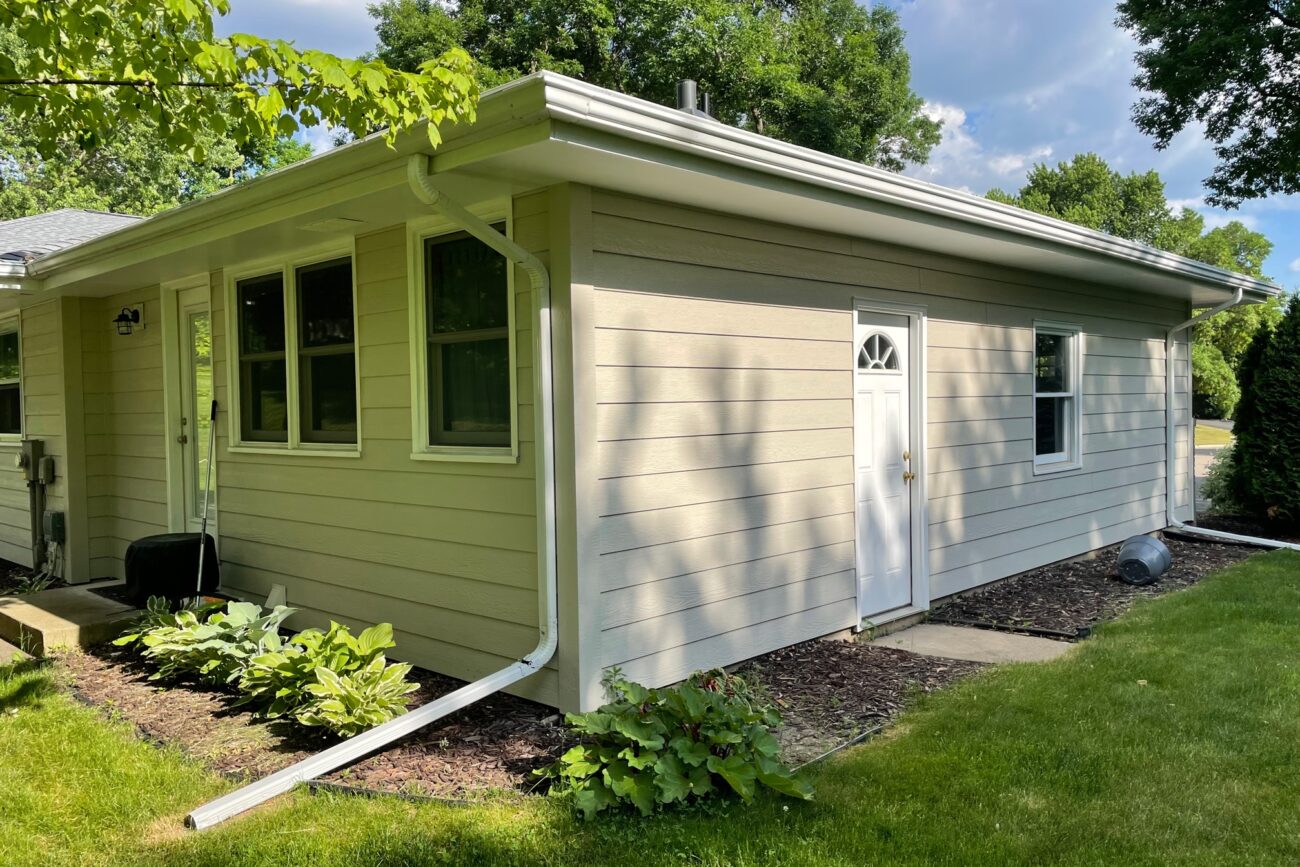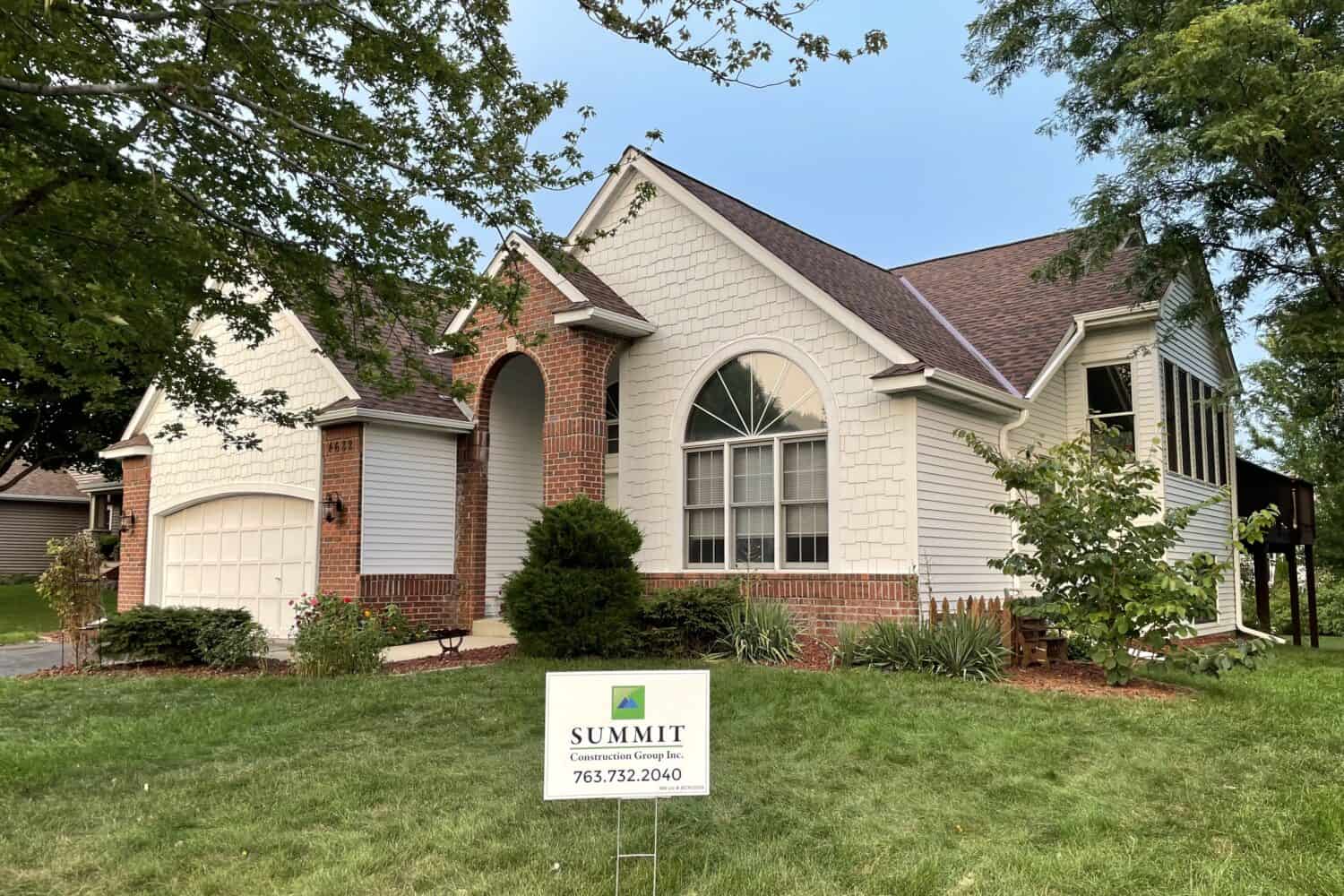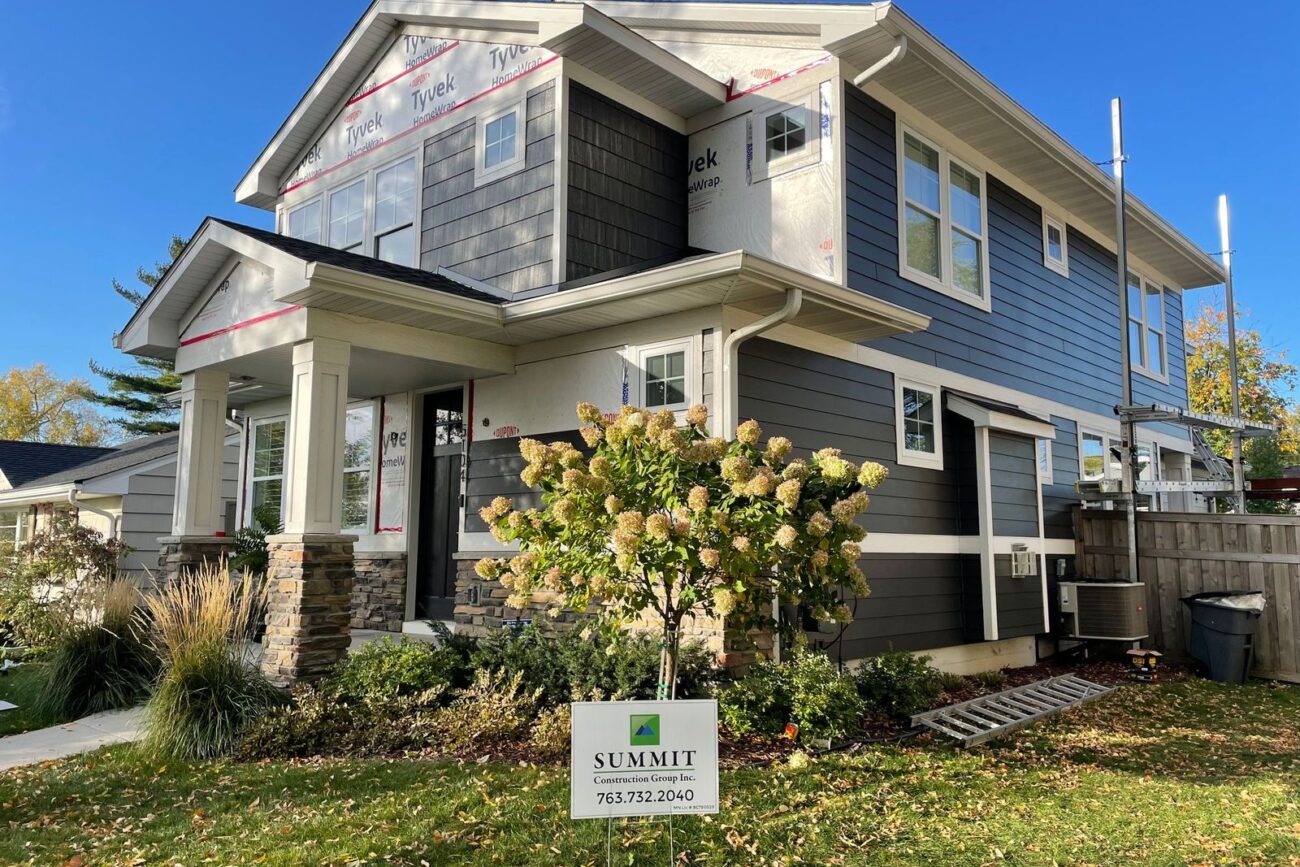Your home’s siding adds more than curb appeal. It protects your home from the elements, which makes re-siding your home an important home renovation project. All the different siding options on the market though gives you a lot to weigh. One option that should not be overlooked is Hardie board siding, which has gained in popularity in recent years as one of the most durable siding options for homes. Its high weather resistance and low maintenance costs along with its aesthetic appeal and energy efficiency makes it stand out, especially in climates that experience extreme temperatures and harsh weather conditions, such as Minnesota. Let’s take a look at Hardie board siding and see if it is the right choice for your home.
What is Hardie Board Siding?
Hardie board siding, or James Hardie siding, is a fiber cement siding made of a blend of cement, sand, and cellulose fibers that are compressed and molded into exterior cladding. It is made by James Hardie, a home exterior products company, and their manufacturing process creates a durable and low-maintenance product that serves as an alternative to traditional vinyl, wood, or metal siding options.
How It Compares to Vinyl, Wood, and Metal Siding
When looking at Hardie board vs vinyl siding, cost usually comes into play. Vinyl is a more budget-friendly upfront cost and is a much lighter product, making it easier to install. It cannot match Hardie board though for durability and resistance to moisture and fire. Vinyl can warp and crack and is more susceptible to wind and hail damage.
As far as Hardie board siding’s comparison to wood, which has a high aesthetic appeal, Hardie board wins out on maintenance. Wood is a high maintenance material no matter how you look at it, in both cost and effort. Hardie board is a low-maintenance option that can be molded to beautifully mimic the look of wood without the maintenance.
Metal is a durable siding option, but Hardie board siding surpasses it for impact resistance. It also has a much wider range of design options than metal, making it a better aesthetic choice.
When looking at other fiber cement siding vs Hardie board, there are comparable brands on the market, but James Hardie is the original and is known for its high-quality and durability.
6 Reasons Homeowners Choose Hardie Board Siding
Like all building materials, you can list Hardie board siding pros and cons, but there are many reasons why homeowners choose to invest in this siding product.
1. Durability
Known for its long lifespan and resistance to wear, durability ranks high on the benefits of this siding option. It’s a high-density material that resists impact and also has the strength to resist weight and pressure, making it much less likely to warp or damage. So, how long does Hardie board siding last? James Hardie board siding comes with a 30-year warranty and with proper maintenance and care can last up to 50 years or more. The factory-applied color finish is UV-resistant, comes with a 15-year warranty, and can be rejuvenated with repainting.
2. Weather Resistance
Hardie board siding’s impact resistance and strength allows it to perform well in rain, snow, hail, heat, and humidity. When exposed to moisture it does not warp, rot or swell and when exposed to the sun it is fade-resistant.
3. Fire Resistance
Hardie board siding is also categorized as one of the best fire-resistant siding materials. It is composed mostly of non-combustible materials and will not spread flames when exposed to fire, making it a much safer option than wood or vinyl.
4. Pest and Rot Resistance
The materials that make up Hardie board siding are also pest resistant, unlike wood, which can provide termites and other pests with a steady diet, causing significant damage. Hardie board’s resistance to moisture protects it from rot, mold, and mildew.
5. Aesthetic Appeal
The aesthetic appeal of Hardie board siding cannot be underestimated. It is a versatile product that comes in a wide range of textures and styles, and more than 700 color finishes. Some of the best Hardie board siding styles include traditional plank lap siding, vertical siding for a more modern look, and also an option that mimics cedar shakes. This versatility makes it a choice that will fit the style of almost any home.
6. Energy Efficiency
James Hardie siding has excellent insulation properties that work to help reduce your home’s energy costs. It is also made of sustainable products, making it a great eco-friendly siding option too.
How Hardie Board Siding Performs in Different Climates
With its high weather, moisture, rot, fade and impact resistance, Hardie board siding is a top-choice for homeowners in climates that experience temperature extremes and severe weather. This is true in hot, humid climates and cold, freezing ones too. It performs exceptionally well in areas prone to hail, high winds, and heavy rain.
Minnesota Fiber Cement Siding Considerations
When it comes to Minnesota home exterior renovation projects, using products that can withstand the extremes in temperature and weather conditions experienced in the area becomes a priority. Siding that withstands hail, Minnesota winters, snow and ice buildup, and freeze-thaw cycles, along with humid summers and their violent thunderstorms can be a challenge. But there is a reason top siding contractors in Minnesota recommend using Hardie board siding.
Hardie Board Siding Installation Process
Hardie board siding does require a more complicated installation process than other materials. It is a heavy product and if not properly installed the integrity of the material can be compromised.
The Hardie board siding installation process takes several steps, which include:
- Preparation: Involves inspecting and repairing walls and installing moisture barriers and framing
- Measuring and cutting: Requires proper tools to ensure accurate sizing and fit
- Installing starter strips and trim boards: Act as guides to ensure correct placement
- Securing the panels: Require proper nailing and spacing techniques exclusive to fiber cement siding
- Finishing touches: Involves sealing gaps, caulking, and painting.
Common Installation Mistakes to Avoid
If all of the steps in the installation process are not followed and completed properly, your Hardie board siding will not have the durability and longevity it is known for. Some common installation mistakes include:
- Not leaving proper gaps for expansion and contraction
- Using the wrong nails or fastening too tightly
- Skipping moisture barriers, which can lead to long-term damage
- Poor alignment, causing uneven seams which compromise the final look
- Failing to prime or paint exposed edges, accelerating wear and tear
Hiring a professional installer trained and certified specifically for James Hardie board siding can help you avoid these installation mistakes, which can severely limit the longevity of your siding.
Even if you are a homeowner who likes and is even good at DIY projects, Hardie board siding is heavy and requires specialized tools and training to install properly. When looking for Minneapolis Hardie board siding experts, make sure to find one who is a certified James Hardie board siding installation professional.
Maintenance and Long-Term Care
For a low-maintenance home siding option, there are still Hardie board maintenance tips to consider for the long-term care of this home improvement investment. Proper care will extend the life of your siding, keeping it protecting your home and looking beautiful for not just years, but decades.
How to Clean Hardie Board Siding
To keep your Hardie board siding looking fresh, periodic cleaning is recommended. Avoid power washers and harsh chemicals, which can damage the surface. Instead, use a mild, water-based soap, a medium soft brush, and a garden hose to clean dirt and debris.
Also, to increase the longevity of your siding, make sure to keep your gutters clean, your trees and shrubs trimmed, and your landscaping from growing up against your home’s exterior.
Inspection and Repair Tips
Checking for cracks, moisture buildup, and wear over time should be a part of your maintenance routine. Look out for cracks in the caulking too, which can compromise the water-resistance barrier. Reapply exterior grade caulk designed for fiber cement siding when necessary to maintain a water-tight seal. If you spot damage it is best to take care of it immediately so a small problem doesn’t grow into a big one.
Winter Maintenance in Minnesota
The freeze-thaw cycles along with heavy snow and ice experienced in climates like Minnesota makes winter maintenance of your Hardie board siding a priority too. Make sure to clean and inspect your siding before winter sets in and repair any damage so you know it is well sealed before the snow flies. Preventing damage from ice and snow is imperative. To do this make sure you have proper ventilation in your attic and along eaves, and also good insulation throughout your home.

Cost vs. Value: Is Hardie Board Siding Worth It?
The upfront costs of installing Hardie board siding is higher than other materials, but when weighed against the long-term savings on maintenance, repairs, and replacement, it can be a cost-effective choice in the long run.
Hardie board siding cost per square foot typically runs between $6 to $15, including labor, which is higher when compared to vinyl, wood, or steel siding. Vinyl and wood usually runs about $3 to $10 per square foot while metal typically runs more between $6 to $15, depending on the type of metal. Again, this initial upfront cost needs to be weighed against the long-term benefits of Hardie board siding.
Hardie board siding is also the best siding for home resale value and can positively impact your home’s curb appeal. The robust 30-year warranty is transferable, so home buyers know they are getting a product that will last.
Low-maintenance is also a plus.
How It Affects Homeowners Insurance Rates
Hardie board siding’s high fire rating can contribute to lower insurance costs in some areas. Its weather resistance, especially to hail damage, can also affect insurance rates since the need for replacement is much less frequent than other materials.
Is Hardie Board Siding Right for Your Home?
If you are looking for a durable, long-lasting siding option that can offer you energy efficiency and aesthetic appeal along with high-quality weather, pest, and fire resistance then Hardie board siding adds up to a smart investment. Like most worthy home improvement projects though it is not a small investment and working with a professional siding contractor can ensure the best results.


